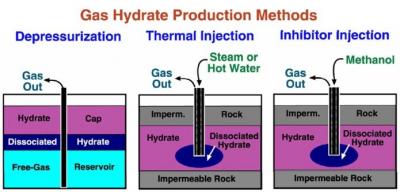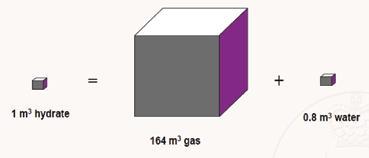

Gas hydrates, which are cages of water molecules entrapping hydrocarbons like methane, ethane etc., are solid snow-like substances found in deep seabed. They are billed as the future energy source as they hold more than two-thirds of world’s organic carbon. The extraction of these hydrocarbons (natural gas) poses several technical challenges, which the researchers worldwide are attempting to solve.First challenge is locating and estimating the potential of these gas hydrate bearing deposits in deep seabed (800 to 1500 m depth). India has so far conducted two deep-sea explorations (in 2006 and 2015) and found significant gas hydrate deposits located 50-150 m below the seabed, 5–12 km off the coast of Andhra Pradesh.
Conservative estimates of this deposit easily meet India’s natural gas demand for the next millennia, at present consumption levels. Next challenge is the safe and energy efficient extraction of gas from unconsolidated seabed. This requires understanding the nature of existence of gas hydrates within the soil sediments: their spatial distribution, type of seabed sediment, and the impact of gas hydrate on stability of the sediment deposit. After extraction, the loose sediment could subside and generate a tsunami. Or, the uncontrolled release of methane from seabed could reduce buoyancy of the floating drilling setup, causing a catastrophic loss of life and equipment. Methane being the most potent greenhouse gas, its uncontrolled release could also have a significant impact on global ecology. Source: USGS Economics demands the extraction and onshore transfer of this gas to be carried out in the most energy efficient manner, which requires researching various extraction and gas collection techniques. Scientists at the IIT Environmental Geotechnology Laboratory, IIT Bombay are looking for motivated researchers and actively seeking collaborations from industry and academia around the world in coming up with novel solutions to address these challenges.
Prof. D N Singh
